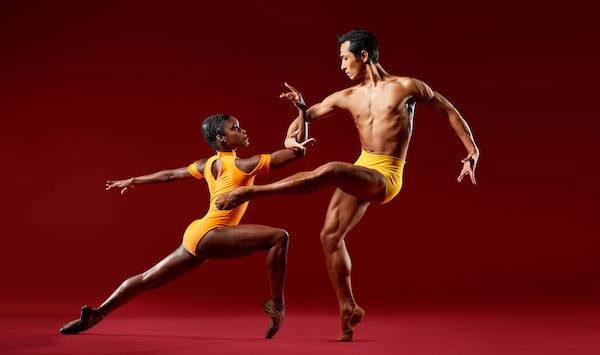Dance Theatre of Harlem lively, magisterial in Ogden debut

The lobby of the Browning Center for the Performing Arts was bustling with activity Saturday night as dance patrons young and old mingled with Weber State University professors and students. The buzz was warranted: it was the first time Dance Theatre of Harlem (DTH)— which is celebrating its 50th anniversary—appeared in Ogden.
DTH founders Arthur Mitchell and Karel Shook started the company in 1969 following the assassination of Martin Luther King, Jr., and King’s dignified presence is evoked by the dancers’ magisterial qualities. The company’s performance in Utah, part of Onstage Ogden’s season, was dedicated to Mitchell, who passed away in September of 2018.
DTH is now directed by Virginia Johnson, a founding member of the company and one of its most acclaimed dancers. She took over the troupe in 2009 and her vision is a large part of DTH’s current acclaim.
Equally important, the dancers are a phenomenal group of artists who merge technique and expressivity: they transform choreography into vibrant and vital communication. Their program contained works by some of the most sought-after ballet-makers today, and these dancers made every piece fresh and relevant. The program consisted of four ballets recently added to DTH’s repertory.
Stanton Welch’s “Orange” opened the evening with three couples dancing to music by Antonio Vivaldi. Their initial formation––standing with their backs to the audience––was echoed in the closing image: the three men lie down on their backs, and the women walk upstage, facing away from the audience, with their arms high and opening, their chests lifted the sky. In between these two images, dancers performed solos and duets that suggested attraction and companionship. The women––Amanda Smith, Alicia Mae Holloway, and Stephanie Rae Williams––were gorgeous in the range of dynamics: from quicksilver solos to more languid partnering work. The men, Anthony Santos, Derek Brockington, and Dylan Santos, were regal partners to the women and commanding soloists on their own. “Orange” evokes the continuum of time, and how we continually persist and move on.
“Change,” choreographed by Dianne McIntyre to traditional music performed by the Spelman College Glee Club, presented a different facet of the company’s repertory: although the women were on pointe, the movement vocabulary was more modern and expressive. Performed by Lindsey Donnell, Daphne Lee, and Ingrid Silva, “Change” began with a dark stage and the women barely visible. They appeared to be searching and reaching. By the final section, they had shed the black translucent skirts and were wearing leotards with mosaic-like patterns of white, gold, and ocher. Now their steps were strong if not defiant, as they marched on pointe or released a forceful shout. At one point the lyrics of a song warn, “Don’t let nobody turn you round…” The program note affirmed, “Often unsung, inconspicuous or up-front, these individuals could be called warriors for change.”
Christopher Wheeldon’s “This Bitter Earth,” acquired by DTH in 2018, is a stunning pas de deux, especially when performed by Crystal Serrano and Choong Hoon Lee. Serrano evokes the clarity and refinement of her role’s originator, Wendy Whelan, with pristine technique and poignant phrasing. Lee is a strong and unaffected dancer, an ideal performer for Wheeldon’s fluid partnering and understated qualities.
The music by Clyde Otis enriches these attributes: Dinah Washington’s 1960 recording of “The Bitter Earth” is intertwined with Max Richter’s “On the Nature of Daylight.” As a pas de deux, “This Bitter Earth” is both realistic and hopeful: Washington sings, “Today you’re young; Too soon, you’re old; But while a voice within me cries; I’m sure someone may answer my call; And this bitter earth; Ooh, may not, oh, be so bitter after all.” In the final moment, Lee wraps his arms around Serrano and lifts her up, reminding us that we all require support and care.
“Balamouk,” by Annabelle Lopez Ochoa, is a sweet and fun close to the program, a bubble-gum ballet: it is stronger in effects than substance. The piece begins with the cast of ten dancers in a tight cluster center-stage grooving to world music by Les Yeuxs Noir (Balamouk is the name of one of their albums). From there they disperse into solos and trios.
After watching the sublime, smooth partnering of Wheeldon’s ballet, Ochoa’s choreography seems awkward and contrived. At one point a dancer imitates the “Dying Swan” solo made famous by Pavlova. In another scene the women stack their heads like the iconic image from “Les Noces” choreographed by Bronislava Nijinska. Nevertheless the performers dance like they’re having the time of their lives and this energy is infectious.
Virginia Johnson wrote in a program note that “Mitchell believed in the power of art to change lives and open minds.” Saturday’s performance brought these words to life.